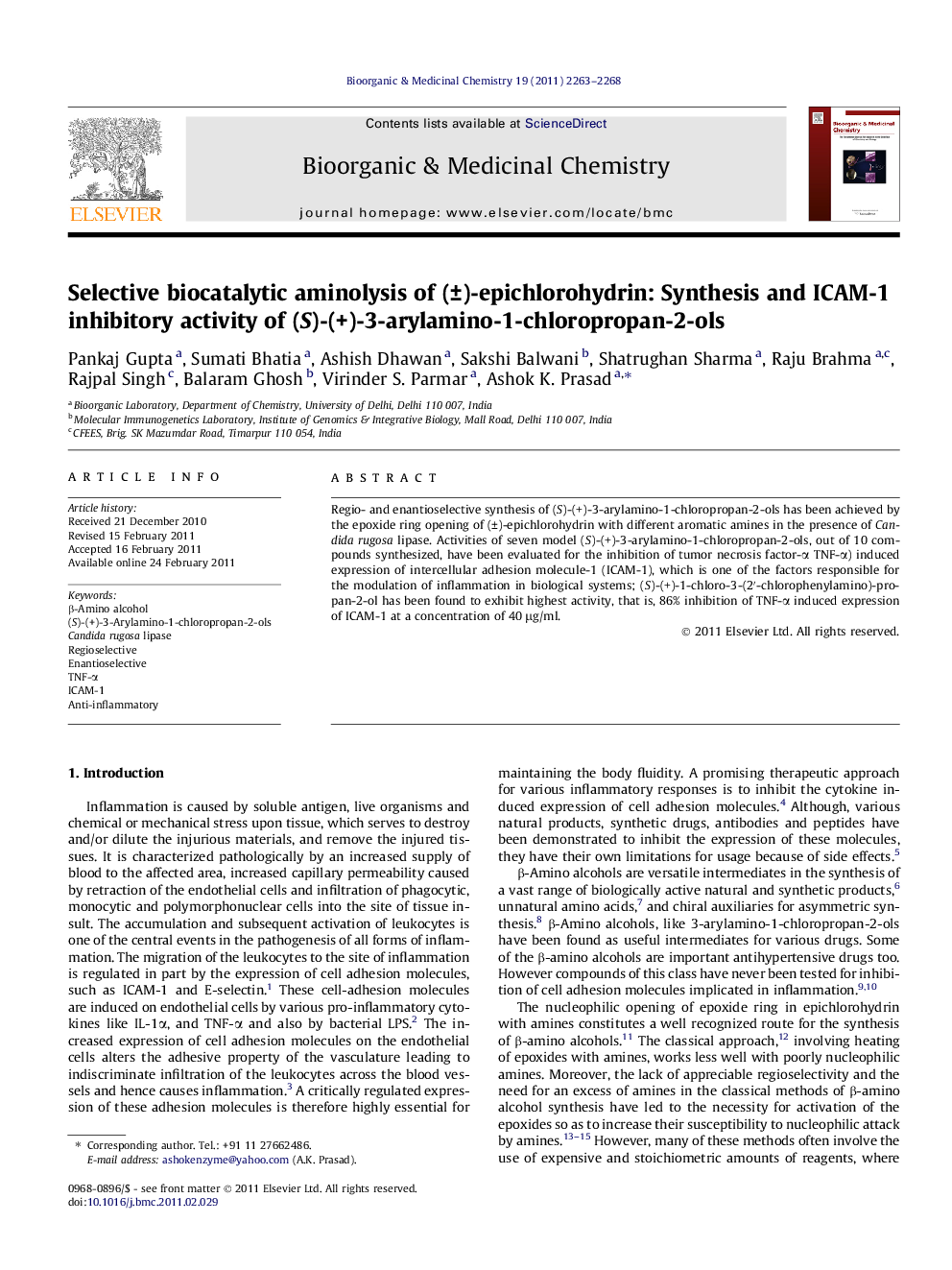| کد مقاله | کد نشریه | سال انتشار | مقاله انگلیسی | نسخه تمام متن |
|---|---|---|---|---|
| 1358957 | 981374 | 2011 | 6 صفحه PDF | دانلود رایگان |

Regio- and enantioselective synthesis of (S)-(+)-3-arylamino-1-chloropropan-2-ols has been achieved by the epoxide ring opening of (±)-epichlorohydrin with different aromatic amines in the presence of Candida rugosa lipase. Activities of seven model (S)-(+)-3-arylamino-1-chloropropan-2-ols, out of 10 compounds synthesized, have been evaluated for the inhibition of tumor necrosis factor-α TNF-α) induced expression of intercellular adhesion molecule-1 (ICAM-1), which is one of the factors responsible for the modulation of inflammation in biological systems; (S)-(+)-1-chloro-3-(2′-chlorophenylamino)-propan-2-ol has been found to exhibit highest activity, that is, 86% inhibition of TNF-α induced expression of ICAM-1 at a concentration of 40 μg/ml.
Regio- and enantioselective synthesis of (S)-(+)-3-arylamino-1-chloropropan-2-ols has been achieved by epoxide ring opening of (±)-epichlorohydrin with different aromatic amines in the presence of Candida rugosa lipase. Activity of seven model (S)-(+)-3-arylamino-1-chloropropan-2-ols, out of 10 compounds synthesized, has been evaluated for the inhibition of tumor necrosis factor-α (TNF-α) induced expression of cell adhesion molecule, that is, intercellular adhesion molecule-1 (ICAM-1) and structure–activity relationship has been established.Figure optionsDownload as PowerPoint slide
Journal: Bioorganic & Medicinal Chemistry - Volume 19, Issue 7, 1 April 2011, Pages 2263–2268